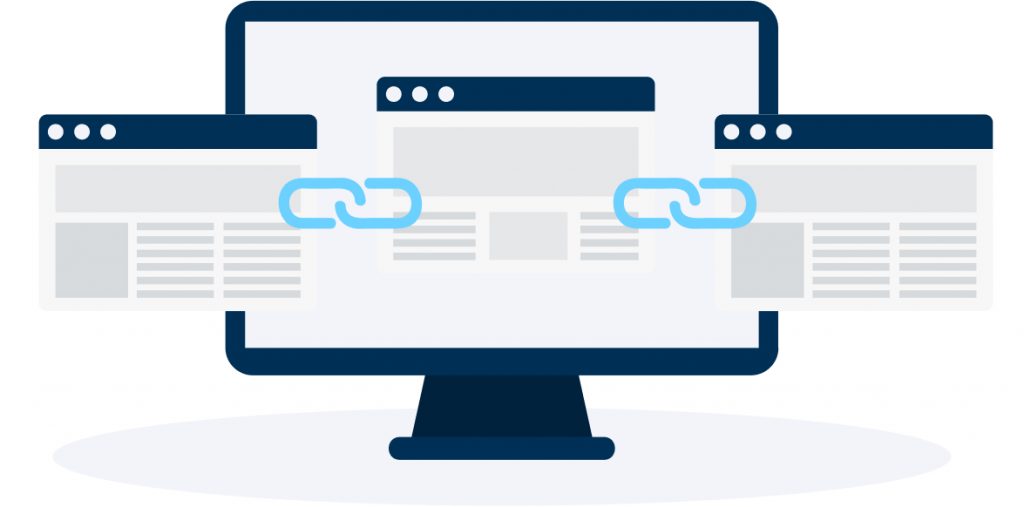
3 Uncommon Link Building Techniques
3 Uncommon Link Building Techniques
Are you building enough quality backlinks?
As one of the highest value components of SEO, link building is a lot more critical than people imagine. And yet, a majority of SEO experts claim that it’s hard to hit the maximum potential for organic traffic without a quality link building strategy.
If you want an effective method for improving your backlinks, consider starting with some of these unique link building techniques.

Testimonial Link Building
Testimonials are a common way for businesses to build up their reputation and increase sales. The added legitimacy of testimonials is a significant boost while publishing and responding to all reviews (yes, including the bad ones) makes a company appear involved with their primary audience.
Fortunately, testimonials and responses are an excellent opportunity to build up stress-free backlinks. Take a look at this Ahrefs testimony page, and you can see several well-known reviewers and SEO experts getting a link back to their site.

One of the drawbacks of this testimonial strategy is that it’s easier to use when people already know who you are. Having an established authority in your industry means people are more likely to see and trust your posts.
But don’t worry, there’s a solution.

Building Testimonial Backlinks in 3 Steps
Step 1: Make a list of targets
The best place to start is by creating a list of products or services for which you want to write testimonials. While building your list, here are a few things to consider:
- It needs to be a product/service you use
- It must have existing testimonials
- The product must be relevant to your site
You don’t have to do a deep dive to come up with this list. Just think about the everyday products or services that you use for business. If your company makes use of a particular print service every time they need hard copies of something, provide a testimonial there.
Step 2: Send your testimonial pitch
Don’t just fire off random testimony. Start by sending a pitch, that way it’s easier to get a backlink alongside your testimony or review. It’s an excellent opportunity to build a relationship with a service provider or brand that you frequently work with anyway.
Things to keep in mind while drafting a pitch:
- Introduce yourself
- Briefly explain how the product or service helps you achieve success
- Provide specific results and proof, if possible
- Ask if you are welcome to post a testimony
- Include your website as part of the testimony
Think of this like any other introductory email; you want to keep it short and straightforward. Explain why you’re reaching out, offer a bit of background, and leave your contact info and website. Most companies are willing to accept testimonials that support their products or services, but it’s a good idea to make additional contact whenever possible.
Step 3: Write your testimonial
After you get the okay, the next step is writing your testimonial. Again, you’ll want to keep it short and sweet. But that doesn’t mean boring, be sure to include compelling evidence that the product or service in question is worth people’s time. Not only is that the whole point of a testimonial but if what you have to say is insightful, the backlink strategy is more likely to draw clicks.
- Write what you love about the product or service
- Write how it helped your business succeed in some way
- Recommend the product or service to others
The important part is to think of this testimonial like any other piece of copy you’d attach to your business. Keep it honest and informative, and hopefully, that will lead people to your site through the backlink.

Link Building with Infographics
Most people either love or hate infographics, with some viewing them as an obnoxious way to condense content and others seeing them as a powerful digital marketing tool. The truth is like anything else. Infographics are as useful as you make them.
Thanks to the visual and easily digestible nature of infographics, they are still reasonably popular. In particular, their potential to be shared and spread through social sites and other portable methods makes them an excellent medium for backlinks.
How To Build Backlinks with Infographics
To start, you’ll want to design your infographic. If you have a decent eye for design, you can use a simple creator like Canva to build your own or you can hire someone on sites like Fiverr. While the design itself is important because, as I mentioned, it’s a very visual medium, the main focus should still be the value provided.
Consider the information you’re including in the infographic and decide if it functions well with visual components. Would it be better as a visual heavy blog? Or does the data present well on a standard set of images with limited text? Even though visual components are essential, having an infographic full of fluff would be pretty useless.
Publishing Your Infographic
If you want to establish ownership of your infographic, publish it on your blog first. Write a compelling blog post related to the newly designed infographics and then push it through your usual blog channels.
However, don’t make the mistake of publishing your infographic solo. It needs to be paired with quality content. Content adds more value to the infographic in general, but it also acts as a signal for search engines to rank your infographic as a search result.
Use the Skyscraper Method
Brian Dean introduced the Skyscraper method years ago, and since then it has become a big part of internet marketing. The basic way of understanding it is this:
Find well performing content in your industry or niche, write updated and improved version of that content, and then reach out to the people linking the competitor content while offering the up-to-date, advanced material.
So, how can you use this technique for infographic link building?
Basically just follow the method. Search for whatever niche you’re trying to fill, then add infographic to the end of your search term.
Let’s use knot tying as an example. Go to Google, search ‘how to tie a knot infographics’.

After hitting the search feature, I found an infographic with a sweet 57 backlinks!

Now you’ll want to set about making an even better version of the infographic you just found. Or, if you wish to gain another edge, consider the graphic you found and see if there are any niches that it doesn’t fill. Producing better versions of content is practical, but filling an empty niche (particularly if people are looking for answers) can provide even more results.
After you’ve got your shiny new graphic, reach out to the people linking the source material you found and ask them if they’d like to link yours as well. Just like with the testimonial pitch, you’ll want to make sure you ask with a positive, friendly approach to keep the lines of communication open.
Share Your Infographics on Social Media
As I mentioned, infographics are great because they’re so easy to share. A picture with some interesting stats and useful data is much easier to send or post on social media than a full blog or article, so be sure to take advantage of sharing opportunities.
The best place to promote your infographics will be Twitter, Facebook, and Instagram. Twitter and Facebook make it incredibly easy to share content, and if a significant influencer in your industry retweets your infographic, it could potentially reach a wider audience.
Infographics link building is super easy once you know the right spot to hit.
Personally, I’ve had the most success with Twitter.

Internal Link Building
Internal link building is one of the most underrated backlink strategies out there. Surprisingly, many internet marketers don’t use this method, and that’s one of the things that makes it so successful when it is used.
Ninja Outreach once published case study where they claim to increase traffic by a whole 40% through proper internal linking. For those that are unaware, internal linking is basically where you link to the same domain within a piece of content.
So, say I’m writing a new article about honey, and I happen to have written a great blog post about bees a few weeks ago, I could link to the bee blog in my honey article.
Internal linking is great for a global SEO strategy for several reasons:
- Improves usability through anchor texts
- Helps spread link juice
- Improves crawl and indexing
- Boosts page views
- Improves PageRank
- Increases time on site
In spite of the fact that it’s such a useful and often underutilized form of backlink building, internal linking is incredibly simple. At worst, it’s a bit time consuming, but at best it provides a wealth of benefits.
Consider previous content whenever you sit down to draft new ideas, blogs, or articles and you can work this strategy into your current backlink building plan without much hassle.

Wrapping Up
When I ventured into the digital marketing world, it was a bit overwhelming. There’s tons of information, and not all of it is useful. Figuring out what works takes experimentation and a lot of testing. Fortunately, backlinks stand up to all of that testing and regularly return a considerable amount of dividends.
I would go so far as to say that backlink building is a necessary part of any successful SEO process. Even if you write a good blog post, optimize on and off page SEO, and increase your traffic speed, without backlinks it’s going to be hard to get the kind of traffic you’re looking for. Hopefully some of these tips can help you get started with your backlink building, or improve any system that you have in place already.
Do you have any hidden link building techniques? Feel free to share them with us!
The views included in this article are entirely the work and thoughts of the author, and may not always reflect the views and opinions of Regex SEO.


January 11, 2020
Wow wow wow, these are truly uncommon link building techniques.
I love that they are brief and straight forward. I would give a try, and kudos to the author for a job well done.
😎😎😎
March 8, 2020
Thank you for sharing. I never thought of testimonials as being good link building sources. This is an article that I wrote on good link building practices. I hope your readers find it helpful.
July 12, 2020
These are great link building techniques – sharing testimonials is a great way also of showing your serious about your product and investing in it by using other services.
July 13, 2020
Agreed!